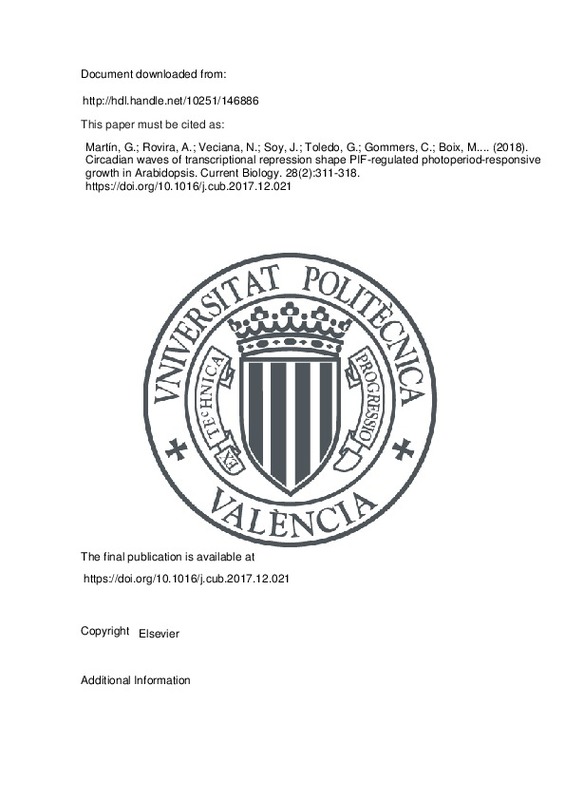JavaScript is disabled for your browser. Some features of this site may not work without it.
Buscar en RiuNet
Listar
Mi cuenta
Estadísticas
Ayuda RiuNet
Admin. UPV
Circadian waves of transcriptional repression shape PIF-regulated photoperiod-responsive growth in Arabidopsis
Mostrar el registro completo del ítem
Martín, G.; Rovira, A.; Veciana, N.; Soy, J.; Toledo, G.; Gommers, C.; Boix, M.... (2018). Circadian waves of transcriptional repression shape PIF-regulated photoperiod-responsive growth in Arabidopsis. Current Biology. 28(2):311-318. https://doi.org/10.1016/j.cub.2017.12.021
Por favor, use este identificador para citar o enlazar este ítem: http://hdl.handle.net/10251/146886
Ficheros en el ítem
Metadatos del ítem
| Título: | Circadian waves of transcriptional repression shape PIF-regulated photoperiod-responsive growth in Arabidopsis | |
| Autor: | Martín, G. Rovira, A. Veciana, N. Soy, J. Toledo, G. Gommers, C. Boix, M. Henriques, R. Minguet, E.G. Halliday, K. Leivar, P. Monte, E. | |
| Entidad UPV: |
|
|
| Fecha difusión: |
|
|
| Resumen: |
[EN] Plants coordinate their growth and development with the environment through integration of circadian clock and photosensory pathways. In Arabidopsis thaliana, rhythmic hypocotyl elongation in short days (SD) is enhanced ...[+]
|
|
| Derechos de uso: | Reconocimiento - Sin obra derivada (by-nd) | |
| Fuente: |
|
|
| DOI: |
|
|
| Editorial: |
|
|
| Versión del editor: | https://doi.org/10.1016/j.cub.2017.12.021 | |
| Código del Proyecto: |
...[+] |
|
| Agradecimientos: |
We thank D. Somers, S. Prat, G. Coupland, and R. McClung for sharing seed and plasmid resources. We thank G. Steele for generating double and triple prr mutants and the prrpif mutant combinations. The work in this manuscript ...[+]
|
|
| Tipo: |
|







![[Cerrado]](/themes/UPV/images/candado.png)


